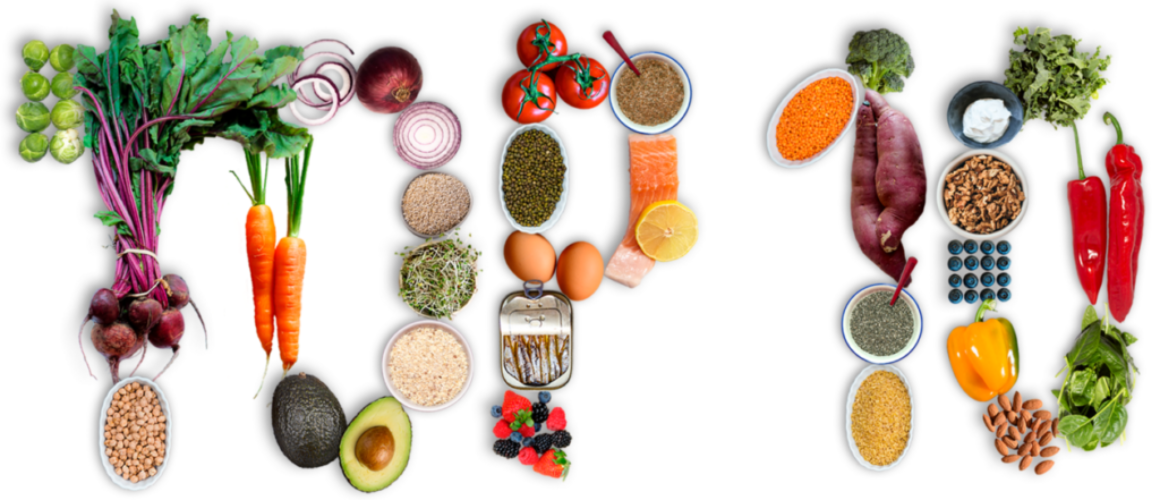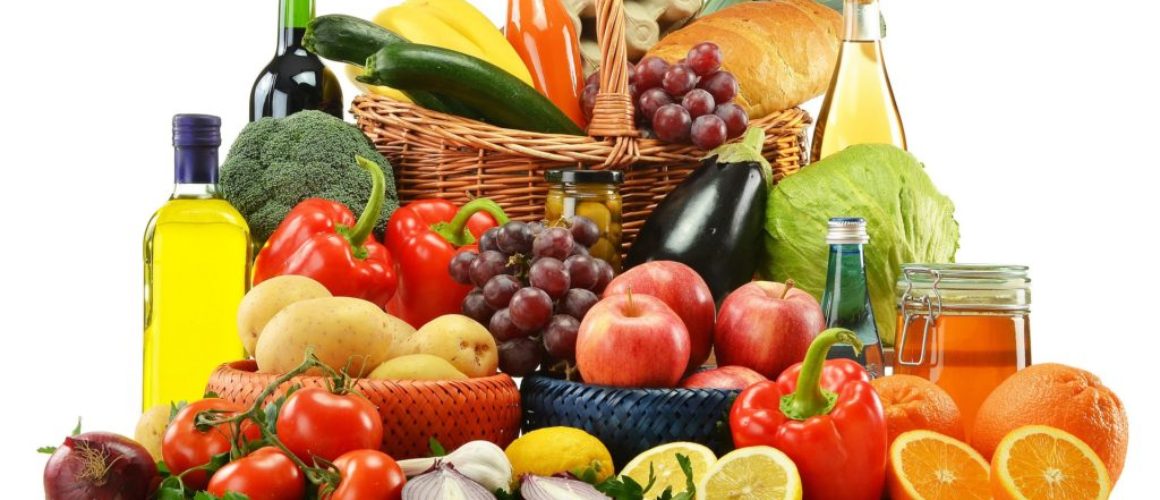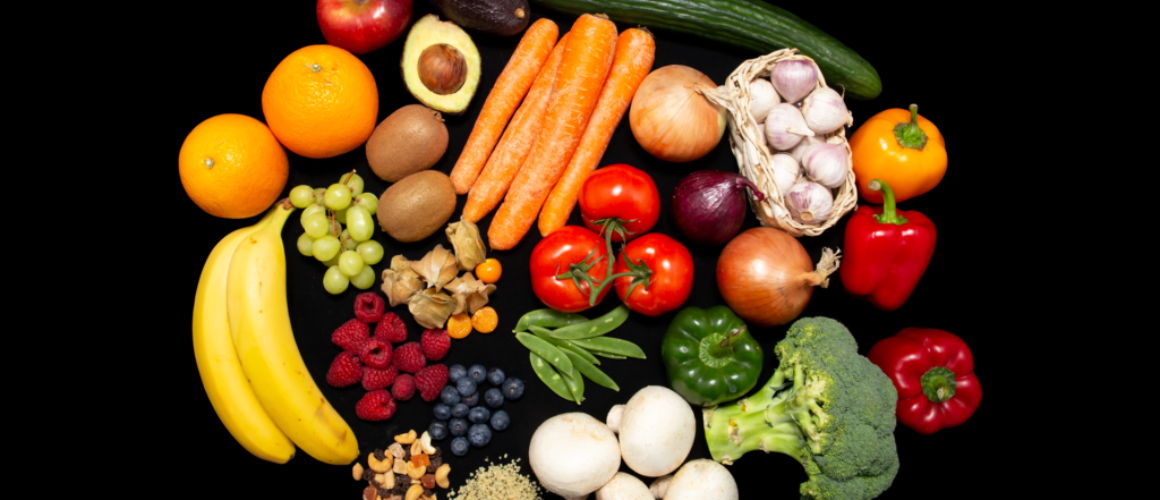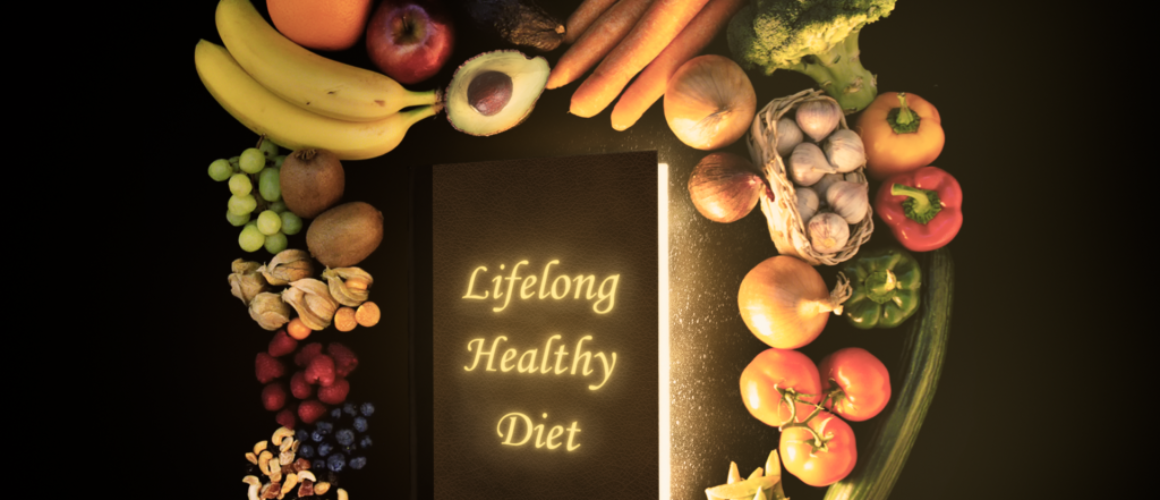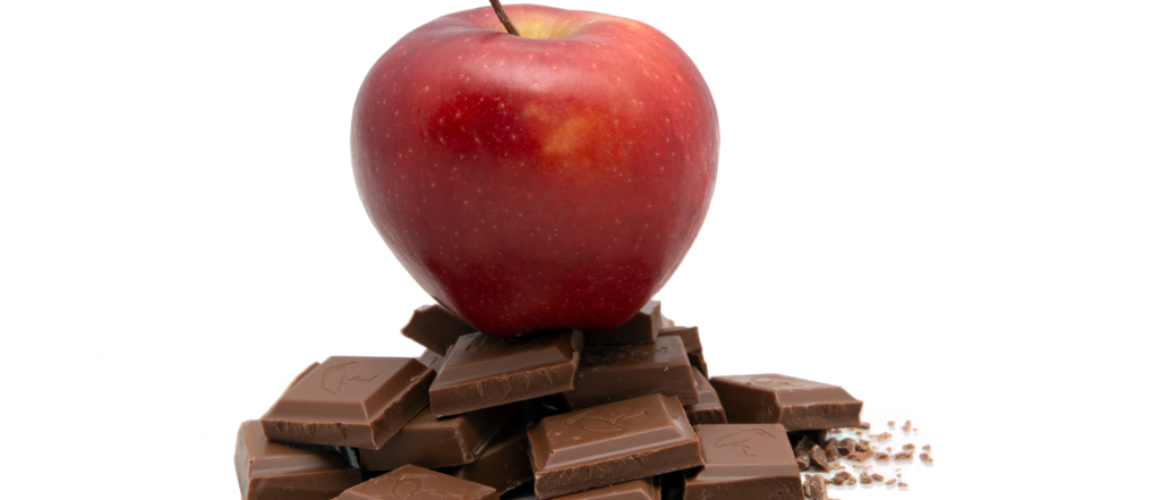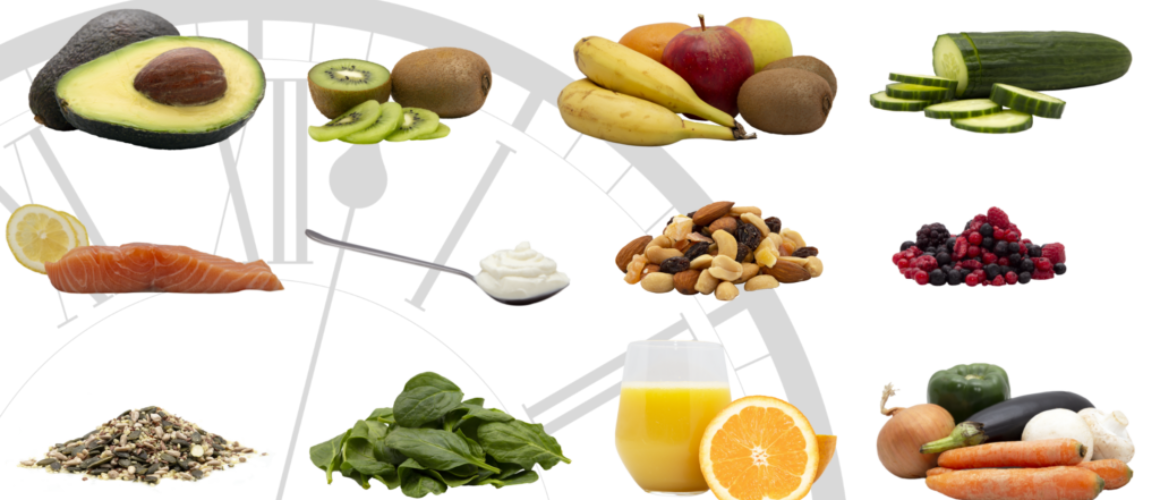1. Legumes (10 Votes)
My money was on berries or leafy greens to top the list, but legumes emerged as the surprise winner. Every one of the ten experts included it in their lists of healthy foods.
Benefits: There were a host of reasons behind legumes topping the list. Most nutritionists pointed out that legumes are an excellent source of plant protein and rich in soluble and insoluble fiber to regulate appetite. They’re also great prebiotics for a healthy gut and better immunity while containing very little saturated fat. Prevention of cardiovascular disease also got two mentions. One nutritionist even pointed out that legumes have good potential for making agriculture more sustainable.
Nutrients. Here are all the nutrients explicitly mentioned by the nutritionists in order of popularity: protein, fiber, iron, potassium, magnesium, folate, polyphenols and isoflavonoids (phytochemicals with antioxidant properties), B-vitamins, zinc, and calcium (especially chickpeas).
Recommendations. Lentils were the most commonly mentioned legume, followed by chickpeas, beans, and edamame/soy. Chickpeas proved to be especially easy to include in my diet. I found them surprisingly tasty just on their own, and they have become a staple in my evening salad. They get even better when roasted with some spices, but I’m admittedly too lazy for that. Also, it was easy to add large amounts of all the other legumes mentioned by the nutritionists to the chili con carne I often have for lunch.
Frequency: You can eat legumes as often as you feel like, although one nutritionist recommended once per day. Only soy came with a stricter recommendation of twice per week.
Science: Here are some scientific studies on legumes listed by the nutritionists, explaining how polyphenol-rich lentils promote health, chickpeas and hummus are packed with nutrients, legumes offer great phytochemical variety and excellent nutritional variety in general, lentils enhance colonic function, dried beans offer solid nutritional value, and legumes have good potential for more sustainable agriculture.
2. Berries (9 Votes)
Even though they did not take the expected top spot, berries came in a close second, with only one expert omitting them from their list.
Benefits: Almost every nutritionist mentioned the antioxidant properties of berries that serve to protect healthy cells from damage by free radicals. Phytonutrients and flavanoids got several mentions for their protection against degenerative diseases. Brain health (prevention of dementia and better cognitive function) and anti-inflammatory properties got two nods each, and four other benefits were mentioned once: heart health and blood pressure, slower aging, reductions in bad cholesterol, and easing of urinary tract infections.
Nutrients: Unsurprisingly, antioxidants topped the list, followed by vitamin C, fiber, vitamin K, potassium, calcium, and manganese.
Recommendations: Blueberries got the most votes, followed by strawberries, raspberries, blackberries, cherries, and cranberries. All these are very easy to eat, benefitting from the berry magic of being sweet while containing surprisingly little sugar. From my experience, berries are at their best at breakfast time, but nutritionists also recommend them for smoothies and general snacks.
Frequency: Like legumes, berries can be eaten at will, although one nutritionist recommended about 80 g per day.
Science: Here are some papers showing how blueberries are a nutritional powerhouse with many health benefits including improved blood pressure, reduced obesity, and slower cognitive decline with age. Strawberries also offer many benefits, counteracting a wide range of diseases, while various other berries also offer many healthy compounds with an impressive range of benefits,
2. Nuts (9 Votes)
In joint second place, we have another natural wonder offering a unique (and tasty) package of health benefits. Next to legumes and berries, nuts complete a top three of amazing nutritional diversity.
Benefits: The big selling point of nuts is their high content of healthy unsaturated fats complemented by plenty of plant protein. Half of the nutritionists also pointed out that nuts are a source of omega 3 fatty acids with a good balance relative to omega 6. These properties mean that nuts can help lower cholesterol, benefiting heart health. However, one nutritionist pointed out that the body absorbed a relatively low fraction of the omega 3 in nuts, so it should not be the sole source. Despite their high energy content, two nutritionists mentioned that nuts actually help with satiety and weight management. They can also reduce inflammation and lower cancer risk.
Nutrients: Omega 3 was the top nutrient pointed out by the nutritionists, followed by selenium, iron, fiber, vitamin E, antioxidants, calcium, potassium, and magnesium. One nutritionist also pointed out that the healthy fats in nuts help with the absorption of vitamins A, D, E, and K.
Recommendations: Walnuts got the most direct mentions, followed by almonds, brazil nuts, pine nuts, and cashews. The nutritionists recommended nuts for early in the morning, which was good news for me since they’ve been a staple in my breakfast for many years. Nuts are also recommended for a healthy snack, although one should practice moderation due to their high energy content.
Frequency: The nutritionists recommended daily intake of nuts, again stressing the importance of small portions. One mentioned 30 g per day, but I must admit to eating more than twice that amount.
Science: The nutritionists added some scientific papers showing that nuts reduce the risk of heart disease, walnuts offer better antioxidant properties than fatty fish that reduce oxidative stress, and other nuts offer similar benefits. Furthermore, pistachios can aid in weight loss and help manage diabetes, and adding more nuts to the Mediterranean diet reduces waist circumference.
4. Dark Leafy Greens (8 Votes)
Leafy greens were one of my pre-game favorites for the win, so I was a little surprised that they missed out on the podium. But fourth spot after legumes, berries, and nuts is nothing to be ashamed of.
Benefits: Antioxidant properties, heart health, healthy blood pressure, and benefits to red blood cells were the most popular benefits among nutritionists. The high nutrient density of leafy greens and the diverse micronutrient profile also got a couple of votes. Furthermore, the nutritionists mentioned the benefits of low calories and glycemic index and the proven reduction in risk of degenerative disease.
Nutrients: Here is the rundown in order of popularity: calcium, vitamin K (that works well with vitamin D and calcium for bone health), folate, antioxidants, magnesium, vitamin C, iron, vitamin A, vitamin E, fiber, and potassium.
Recommendations: Kale was the most popular leafy green, closely followed by spinach. Swiss chard, mangold, and arugula also got one vote each. Before I learned to love salad, I took my dark leafy greens more like medicine than food, mainly via my trusty green smoothy. If you’re still struggling with your leafy greens, green smoothies and adventurous salads are your tickets to success. One nutritionist also recommended plenty of vitamin C in a salad with spinach since it helps with iron absorption.
Frequency: The recommendation is to eat dark leafy greens twice a day.
Science: Here are some papers showing how leafy greens reduce the risk of cardiovascular disease and slow the rate of cognitive decline with age, and how spinach prevents oxidative DNA damage again and again.
5. Fermented foods (7 Votes)
Rounding out the top five, we have another surprise (to me at least). I love my yogurt, but I didn’t expect seven out of ten nutritionists to recommend fermented foods.
Benefits: The superpower of fermented foods lies in their benefits to gut health, which is receiving plenty of attention nowadays via the gut-brain axis. They’re also good for bone health and a robust immune system for general disease prevention. It also helps that they’re highly versatile and delicious.
Nutrients: In order of popularity, nutrients mentioned around fermented foods include probiotics, calcium, protein, B-vitamins, and magnesium.
Recommendations: Unsurprisingly, Greek yogurt was the most popular in this category. However, something I had never even heard of before, kefir, came in second and soon became a staple in my diet. Kefir goes well with Greek yogurt in my breakfast, offering greater diversity in probiotic cultures. In addition, buttermilk, kimchi, Sauerkraut, and tempeh each got one mention. One nutritionist also recommended plenty of fiber with fermented foods to really make those gut bacteria jump for joy.
Frequency: Fermented foods can be consumed daily.
Science: The nutritionists recommending fermented foods were not so generous with scientific papers, but here are three resources they provided: a Harvard post on the role of probiotics in health, a paper on the general benefits of fermented foods, and a Harvard guide to yogurt.
6. Eggs (6 Votes)
After being falsely linked to high cholesterol and heart disease for decades, eggs are coming back in a big way. Their sixth place in this list confirms this resurgence.
Benefits: A complete protein profile was the first benefit pointed out by nutritionists. Even though eggs are of animal origin, the eggs from one laying hen provide about 10x more protein than the meat from one broiler chicken, making it substantially more efficient. Eggs are also good for bone, cell membrane, and brain health, and come with antioxidant properties, relatively few calories, and little saturated fats.
Nutrients: Here is the long list of egg nutrients in order of popularity: all essential amino acids (complete protein), vitamin D, B-vitamins, choline, HDL (good) cholesterol, calcium, selenium, potassium, lutein, zeaxanthin, omega 3, antioxidants, zinc, iron, magnesium, vitamin A, vitamin K, lycopene, and phospholipids.
Recommendations: The first important recommendation pointed out by the nutritionists is that the yolk contains most of the nutritional value in the egg, so don’t throw it away. Aside from that, eggs are commonly recommended as a good breakfast food, potentially aiding weight loss.
Frequency: Even though eggs are no longer seen as a dangerous food, the nutritionists still recommended a maximum of 2 per day, 3–4 days per week.
Science: Here are some egg-related papers: Eggs do not increase the risk of heart disease, increasing only good cholesterol. Furthermore, egg yolks are particularly nutritious, being an excellent source of choline which has multiple health benefits and lutein and zeaxanthin that help enhance eye function while also offering anti-inflammatory services.
6. Oats (6 Votes)
It’s amazing that something as seemingly bland as oats could grab a joint sixth place on this list. But as we’ll see in this section, there’s a lot going on behind that bland facade.
Benefits: The biggest benefit highlighted by the nutritionists is the ability of oats to stabilize blood sugar and improve satiety. This makes them well-suited for weight loss and lowering the risk of diabetes. Oats also come with plenty of gut-healthy fiber, and it lowers cholesterol for better heart health. Pure oats also gets the gluten-free label, although it could get contaminated with gluten during processing.
Nutrients: There is plenty of good stuff in oats, including fiber, antioxidants, B-vitamins, potassium, folate, manganese, phosphorous, magnesium, and zinc.
Recommendations: Generally considered a good breakfast food, oats play well with other healthy options like berries, fruit, nuts, and seeds. It’s important to select a minimally processed oat product since highly-processed instant oats lose the ability to regulate blood sugar. Nutritionists also recommend not heating oats to high temperatures, which reduces the nutritional value due to releases of the anti-nutrient, phytic acid. Rather soak for an hour or two. I soak my breakfast oats and seeds together overnight at virtually no inconvenience.
Frequency: Oats can be consumed daily, and some nutritionists even went as far as setting the minimum intake at 3x per week.
Science: Here are some papers showing how oats benefit patients with cardiovascular disease and diabetes, and lower LDL (bad) cholesterol. It also limits glucose spikes and offers several other potential health benefits.
8. Seeds (5 Votes)
As a big seed fan, I was a little disappointed that they only appeared in eighth position. Overall, seeds have much in common with nuts, but often come with more protein and fiber and less fat. If it were up to me, they would certainly be higher up on the list.
Benefits: Protein was the #1 reason nutritionists put seeds on their top 10 lists. Some, like chia and hemp, even offer the complete set of essential amino acids. Reason #2 came in the form of healthy unsaturated fats and omega 3 fatty acids. The nutritionists also pointed out that seeds come with antioxidant properties, help regulate blood sugar, lower cholesterol, control appetite for weight management, improve immunity, and help with the absorption of fat-soluble vitamins.
Nutrients: Although there are plenty more, the nutritionists pointed out complete proteins, healthy fats, omega 3, iron, calcium, fiber, and potassium as key nutrients from seeds.
Recommendations: Chia and flax seeds were the top recommendations, but I also like hemp, pumpkin, and sunflower seeds. I eat my seeds with breakfast, but the nutritionists also recommended them for smoothies, soups, salads, or added to water, milk, or protein shakes. Soaking for a couple of hours can aid in digestion, especially for flax seeds, while chia seeds give a very interesting texture to an oat breakfast when left to soak with the oats.
Frequency: Seeds can be consumed daily, although, like nuts, one should take care with portion sizes due to their high energy content.
Science: The nutritionists gave two papers on the wide range of health benefits of chia seeds that include high antioxidant capacity.
8. Fatty fish (5 Votes)
Next to eggs, fish offer another attractive source of animal protein. Fatty fish, rich in omega 3, is generally considered the pick of the bunch and deserves a spot on this list.
Benefits: The high-quality proteins and omega 3 fatty acids in these fish were the top benefits listed by nutritionists. Some of the mentioned benefits of omega 3 include better heart health, improved concentration and cognitive skills, improved nervous system health, and reduced arthritis symptoms. Two nutritionists also highlighted the high vitamin D content of these fish, which is particularly useful in regions will dark winters (vitamin D is mainly produced in the skin by exposure to sunlight). The healthy fats in fatty fish also assist in the absorption of vitamins A, D, E, and K.
Nutrients: Protein, omega 3, and vitamin D top the list, followed by selenium, vitamin A, calcium, niacin, potassium, and vitamin B12.
Recommendation: Salmon was recommended by every nutritionist that mentioned fatty fish. There is quite some debate about farmed vs. wild salmon. While wild salmon is healthier, farmed salmon is the only way to sustainably satisfy growing global demand. At least here in Norway, the salmon industry is very tightly regulated and produces fish that retain excellent health benefits. Sardines and mackerel also got a vote. Both offer similar health benefits to salmon at a considerably lower price point. I eat more mackerel than salmon nowadays, mainly because rising global demand has made salmon very expensive.
Frequency: Nutritionists recommend eating fatty fish 2–3 times per week.
Science: Here are some papers showing that omega 3 reduces inflammation, enhances metabolic health, and reduces depression, the selenium in fatty fish brings numerous benefits, salmon lowers the risk of heart disease, and eating fish can make you smarter.
10. Cruciferous veggies (4 Votes)
Kicking off a thrilling 4-way tie for tenth place, we have another famed sub-family of vegetables. It’s a little tricky because some of the leafy greens that took fourth spot are also part of the cruciferous family, so technically, this section is about cruciferous veggies that are not dark leafy greens.
Benefits: The high nutrient density of cruciferous veggies aid in immunity, bone health, eye health, cell communication, and blood sugar regulation. They also protect against degenerative disease and ensure better mental aging.
Nutrients: In order of popularity among nutritionists, the top nutrients in cruciferous veggies include vitamin C, calcium, vitamin K, phytonutrients and other antioxidants, folate, B vitamins, magnesium, potassium, vitamin A, soluble fiber, and something quite interesting called sulforaphane.
Recommendations: Broccoli is the obvious top pick in this category, followed by Brussels sprouts and something that was news to me: broccoli sprouts. Other popular examples are cabbage and cauliflower. Having never been a fan of broccoli, I had to get quite creative when I learned just how nutritious it is (unless it is overcooked). This mission led to the “meat as a vegetable dressing” philosophy that has served me well for many years. The sprouts are a much more recent addition to my diet, inspired by this top 10 exercise. I now sprout my broccoli seeds at home (which is surprisingly easy), mainly for use in salads.
Frequency: Cruciferous veggies can be eaten daily. One nutritionist recommended 80 g per day.
Science: Here are the papers showing how carotenoids in cruciferous veggies benefit eye health and how broccoli sprouts improve insulin resistance in diabetes patients and help prevent cancer through their high sulforaphane content.
10. Avocado (4 Votes)
The avo deserves a category of its own since it’s classified as a berry but boasts a totally different nutritional profile. It’s also one of my favorite foods, so I was relieved when it managed to squeak into the top 10.
Benefits: Aside from being delicious and highly versatile, the most popular benefits of avocados come from their healthy fats and cholesterol-lowering fiber content. They also boast antioxidant, anti-inflammatory, and anti-cancer properties. Another interesting benefit of avocados is that they assist in nutrient uptake, making the foods eaten with them more nutritious (especially the greens in salads).
Nutrients: Here is the nutrient rundown in order of popularity: monounsaturated fats, soluble and insoluble fiber, potassium, vitamin E, vitamin K, B-vitamins, folate and folic acid, carotenoids (antioxidants), vitamin D, and calcium.
Recommendations: Avocados can be used in a variety of dishes. I used to take a pure convenience route and eat almost all my avo crushed on some whole-wheat crackers, but since I learned about the benefits avos have on nutrient absorption, I now eat most of my avos in salads.
Frequency: Avocados can be eaten daily, but moderation should be applied due to their high energy content. The nutritionists recommended one avo per day only for very active people.
Science: Here are some studies showing that avos can increase HDL (good) cholesterol, are associated with an overall better diet and health outcomes, and enhance nutrient uptake from salads.
10. Tomato (4 Votes)
Another food that deserves a category of its own, the tomato is technically a fruit that commonly gets treated as a vegetable. It comes with unique nutritional advantages that got four nutritionists to include it on their lists.
Benefits: The main reason nutritionists like tomatoes is because of something called lycopene. This magic nutrient brings all sorts of benefits in terms of immunity, degenerative disease prevention, and even protection against UV damage. It’s also rich in potassium that helps offset the harmful effects of sodium that’s all too abundant in modern diets.
Nutrients: Although tomatoes contain many nutrients, the nutritionists only mentioned fiber, lycopene, and potassium.
Recommendations: Tomato is very versatile both in raw and cooked meals. I’ve long disliked raw tomatoes (mainly due to the texture), but cherry tomatoes in salads soon fixed that. Luckily, the nutritionists say that canned tomato is also healthy, so I use plenty of that in my cooked meals.
Frequency: Tomatoes can be eaten daily. One nutritionist recommended 80 g per day.
Science: Here are some studies showing how tomatoes and lycopene benefit heart health (possibly by platelet anti-aggregation), are important for preventing heart attacks, and inhibit prostate cancer and cancer in general.
10. Other veggies (4 Votes)
Rounding out the list, we have an array of vegetables other than dark leafy greens, cruciferous veggies, and tomatoes.
Benefits: The big over-arching benefits of vegetables are their high nutrient density and fiber content, making them essential for general health. There is solid evidence that vegetables, in general, prevent a range of diseases, improve immunity, and offer antioxidant services.
Nutrients: In order of popularity, the nutritionists listed fiber, vitamin C, iron, folate, beta-carotene converted to vitamin A, antioxidants, vitamin E, and potassium.
Recommendations: Two of the general vegetable votes went to sweet potatoes, which is a healthier alternative to regular potatoes. It’s a good idea to make this substitution (at least partly). Other veggies mentioned explicitly include pumpkin, carrots, capsicum, onion, beets, and red bell peppers. If you don’t like veggies, I strongly recommend dedicating some time to research and experimentation aimed solely at making them taste great. It is possible! For example, mastering the art of baked sweet potato and vegetable soup (in addition to the meat as a vegetable dressing idea mentioned earlier) significantly boosted my vegetable intake.
Frequency: Vegetables can be eaten daily.
Science: The veggie papers supplied by nutritionists say that beta-carotene in foods like carrots and sweet potatoes is an important source of vitamin A, purple-fleshed sweet potatoes may be effective against cancer, sweet potatoes offer a potential remedy for vitamin A deficiency in Sub-Saharan Africa, onion compounds can lower blood pressure, onions are rich in dietary flavonoids with good antioxidant properties, and allium vegetables like onion and garlic can reduce cancer risk.
Honorable Mentions
Several interesting foods just missed out on the extended top 10:
- Quinoa (3 votes): Complete protein packing a wide range of nutrients
- Sea veggies (2 votes): Rare source of iodine often lacking in our diets
- Garlic (2 votes): Medicinal ingredient in naturopathic practices
- Meat (2 votes): High-quality protein and source of B-vitamins
- Fruit (2 votes): Tasty source of many essential vitamins
- Olive oil (2 votes): Generally viewed as the healthiest oil option
- Matcha (1 vote): An alternative to coffee with many health benefits
- Whole grains (1 vote): Affordable and fiber-rich healthy staples
- Dark chocolate (1 vote): An antioxidant-rich treat
- Turmeric (1 vote): A highly concentrated antioxidant source







